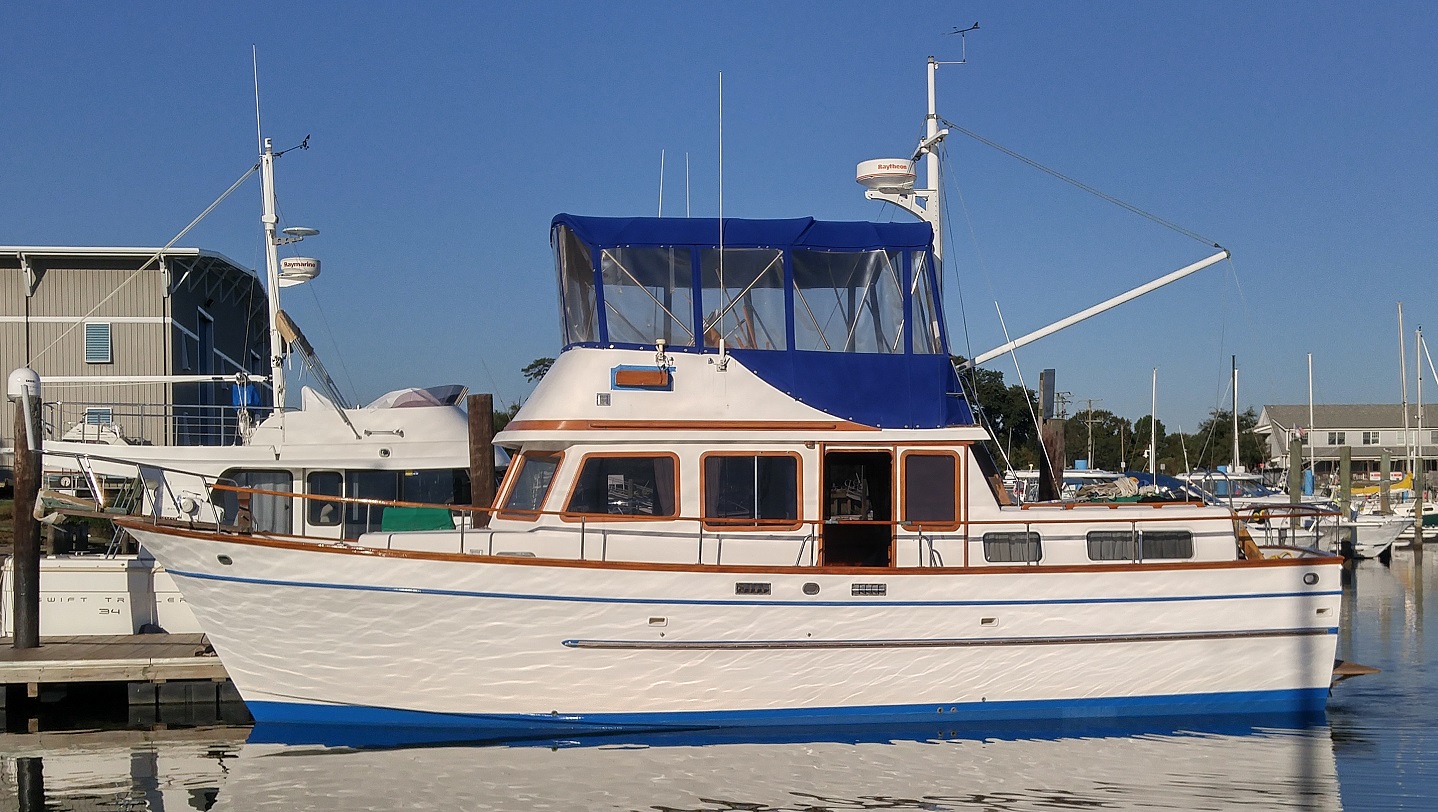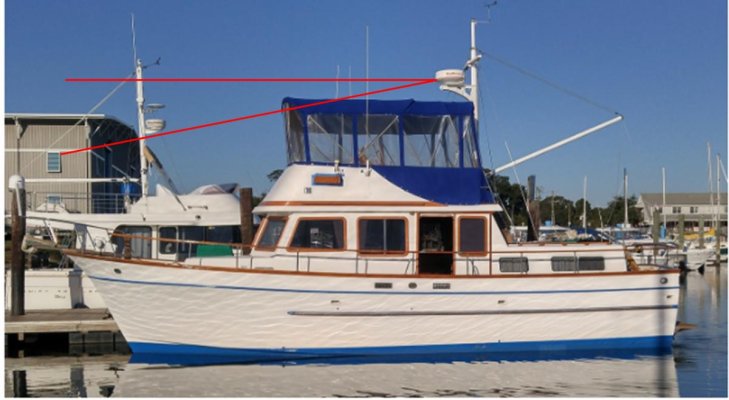seattleboatguy
Senior Member
One of the things I did since the picture below was taken was to replace the old Raytheon radar dome with a new Garmin unit. According to the manual, the Garmin dome looks "down" 12.5 degrees, which puts the lower portion of the radiation beam uncomfortably close to anyone steering at the helm on the flying bridge. I could always steer down below when using the radar, but the visibility is better on the flying bridge with a whole lot less engine noise. My questions are:

- If I purchased a radiation dosimeter at Walmart, would that tell me if a helmsman on my fly bridge is getting dangerously high radiation from the radar?
- Do you think some thin aluminum on the bimini would significantly reduce the radiation levels?






